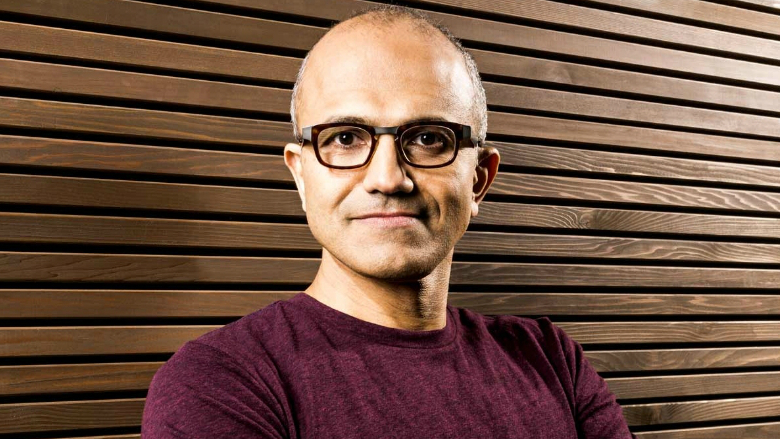The future of Windows: where will Microsoft take its OS next?
The next step is about devices and services rather than features

The way Myerson talked about this last year (without actually mentioning a combined OS), was to make it more attractive for developers. "We want to have one platform that powers all our devices so developers can really target the aggregate scale of Microsoft [devices]." But that one platform isn't the same everywhere. "Each form factor does require a unique tailored experience… to really delight the customer. Xbox has got this magical experience on a four-foot screen that I wouldn't want in my pocket on a four-inch screen, and likewise I wouldn't want to scale up Windows Phone to a four-foot screen."
Windows RT apps can already adjust to a smaller screen size, by scaling down or switching to a different UI. Apply that to the start screen, along with the principle that larger, higher resolution screens let you open more windows at once, and it's not hard to find a way of thinking about one operating system that could span phone and tablet with slightly different interfaces. After all, that's what iOS does.
One question is what happens to the desktop. Early reports that Update 1 would always boot straight into the desktop seem to be describing a bug in the leaked build rather than a deliberate decision, but desktop users will probably get more integration with Store apps and maybe more. We'd love to see the 'swipe to switch' gesture move between all your open apps, whether they're desktop or Store, for example.
Windows Phone doesn't have and doesn't need the desktop. Windows RT needs the desktop for the Office apps, for Explorer file management, for a fuller version of Internet Explorer, for Paint and Notepad, and for the parts of control panel that haven't made it into PC Settings. When the touch version of Office comes along, will that be a good reason for the desktop to go away? Or will we see a sliding scale of functionality, where you get more features – like multiple windows and the desktop – when you have a larger screen, with higher resolution so they're usable?
And if you need more than what you get in your device's version of Windows, maybe you could stream it. Microsoft is rumoured to be working on a service to stream a desktop version of Windows from the cloud, and on a gaming service that would let you stream Xbox games onto Windows Phone and Windows RT (and whatever the combination ends up being).
Over the threshold: free or futuristic?
Those would be services you'd pay for. Would you still be paying for Windows as well? At the annual shareholders meeting last November, Steve Ballmer said the days of selling someone a DVD of software "won't be there in ten years from now" and instead you'd have to offer a cloud service to deliver and update it. Presumably you'd pay for that; like buying Windows 8 and getting the free Windows 8.1 upgrade.
Are you a pro? Subscribe to our newsletter
Sign up to the TechRadar Pro newsletter to get all the top news, opinion, features and guidance your business needs to succeed!
As for selling Windows to OEMs (and Windows RT and Windows Phone, which hardware manufacturers pay a fee for now) when Android is free, "the question is how you really drive and monetise the value," said Ballmer.
That sound like services and 'high value activities' again, built on the pieces that come in Threshold.
Once across the Windows Threshold, though, we might see more radical changes to the operating system than the annual and biennial improvements in Windows 8.1 and expected in Update 1. The man behind Microsoft Research, Rick Rashid, started in operating systems (he was one of the people behind Mach, the Unix kernel adopted in Mac OS X) and as part of the One Microsoft reorg he went back into product development. That should mean more of the lessons from research operating systems like Drawbridge and Midori making their way into products.
Some of those may well be most relevant to Azure or Xbox, which both run the Windows OS. Drawbridge was a research OS that was about isolating applications for security without the drawback of virtualisation.
Midori was written to make sure that the M# programming language worked well enough to build complex things like operating systems (and the M# language was developed to make it possible to write a more secure operating system). Similarly, the earlier Singularity OS was written to explore improving security by isolating processes.
It's very unlikely that a research project would turn into a complete replacement for Windows. But with Rashid back in the OS team after decades at MSR, it's clear Microsoft is planning a future for Windows long beyond the tweaks in Update 1.
Mary (Twitter, Google+, website) started her career at Future Publishing, saw the AOL meltdown first hand the first time around when she ran the AOL UK computing channel, and she's been a freelance tech writer for over a decade. She's used every version of Windows and Office released, and every smartphone too, but she's still looking for the perfect tablet. Yes, she really does have USB earrings.